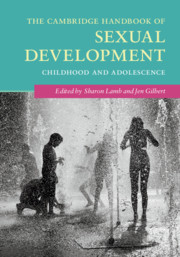Book contents
- The Cambridge Handbook of Sexual Development
- The Cambridge Handbook of Sexual Development
- Copyright page
- Contents
- Notes on Contributors
- Acknowledgments
- Introduction
- Part I What Is Sexual Development?
- Children
- Adolescence
- 7 The Diversity of Adolescent Male Sexuality
- 8 Developmental Trajectories and Milestones of Sexual-Minority Youth
- 9 Bad Choices
- 10 From Tightrope to Minefield
- 11 Gender, Class, and Campus Sexual Cultures
- 12 Yellow Fever and Yellow Impotence
- 13 Conceptualizing Sexuality in Research about Trans Youth
- Part II How Do We Study Sexual Development?
- Part III Media, Family, Education
- Index
- References
8 - Developmental Trajectories and Milestones of Sexual-Minority Youth
from Adolescence
Published online by Cambridge University Press: 27 December 2018
- The Cambridge Handbook of Sexual Development
- The Cambridge Handbook of Sexual Development
- Copyright page
- Contents
- Notes on Contributors
- Acknowledgments
- Introduction
- Part I What Is Sexual Development?
- Children
- Adolescence
- 7 The Diversity of Adolescent Male Sexuality
- 8 Developmental Trajectories and Milestones of Sexual-Minority Youth
- 9 Bad Choices
- 10 From Tightrope to Minefield
- 11 Gender, Class, and Campus Sexual Cultures
- 12 Yellow Fever and Yellow Impotence
- 13 Conceptualizing Sexuality in Research about Trans Youth
- Part II How Do We Study Sexual Development?
- Part III Media, Family, Education
- Index
- References
Summary
- Type
- Chapter
- Information
- The Cambridge Handbook of Sexual DevelopmentChildhood and Adolescence, pp. 156 - 179Publisher: Cambridge University PressPrint publication year: 2018
References
- 3
- Cited by



